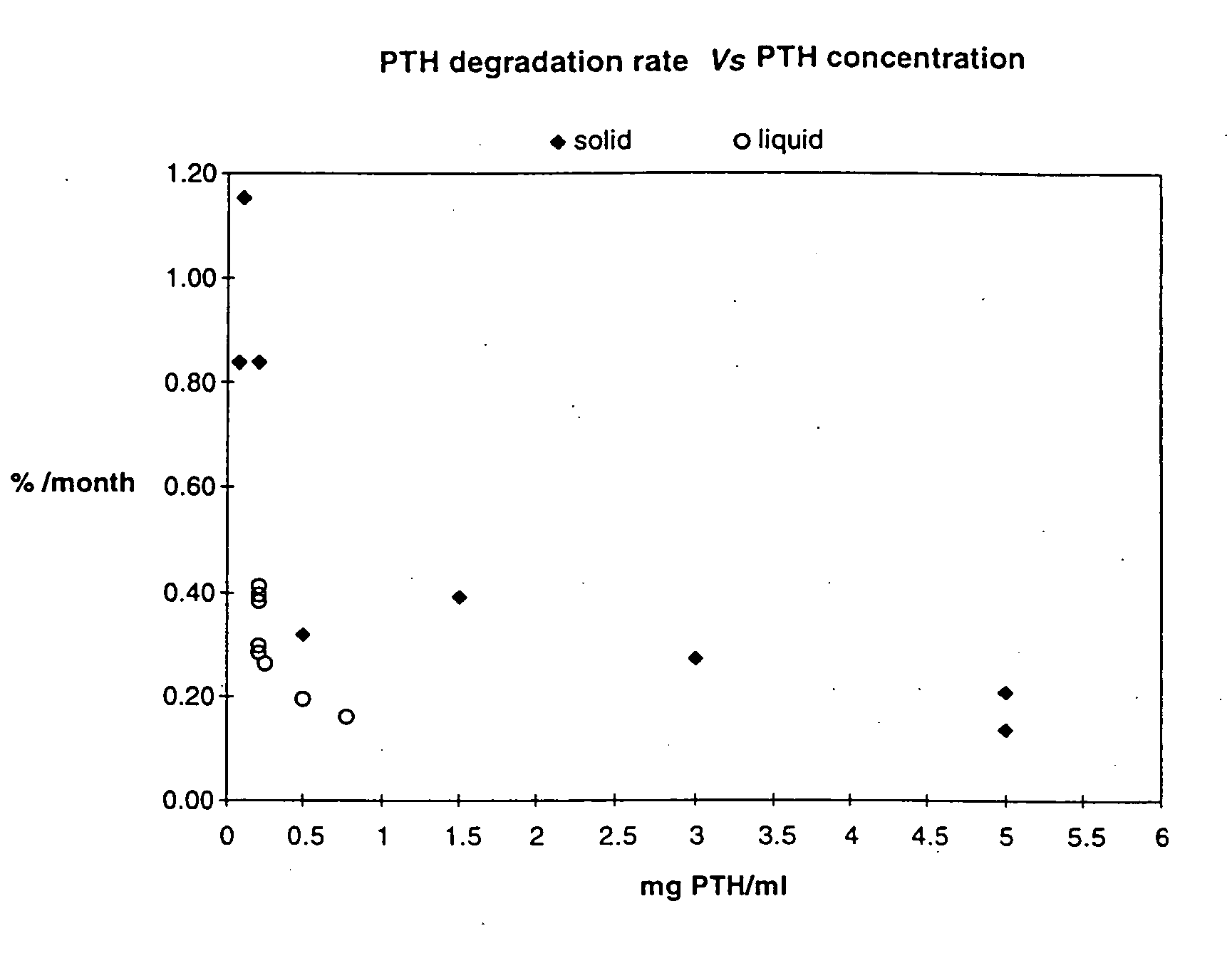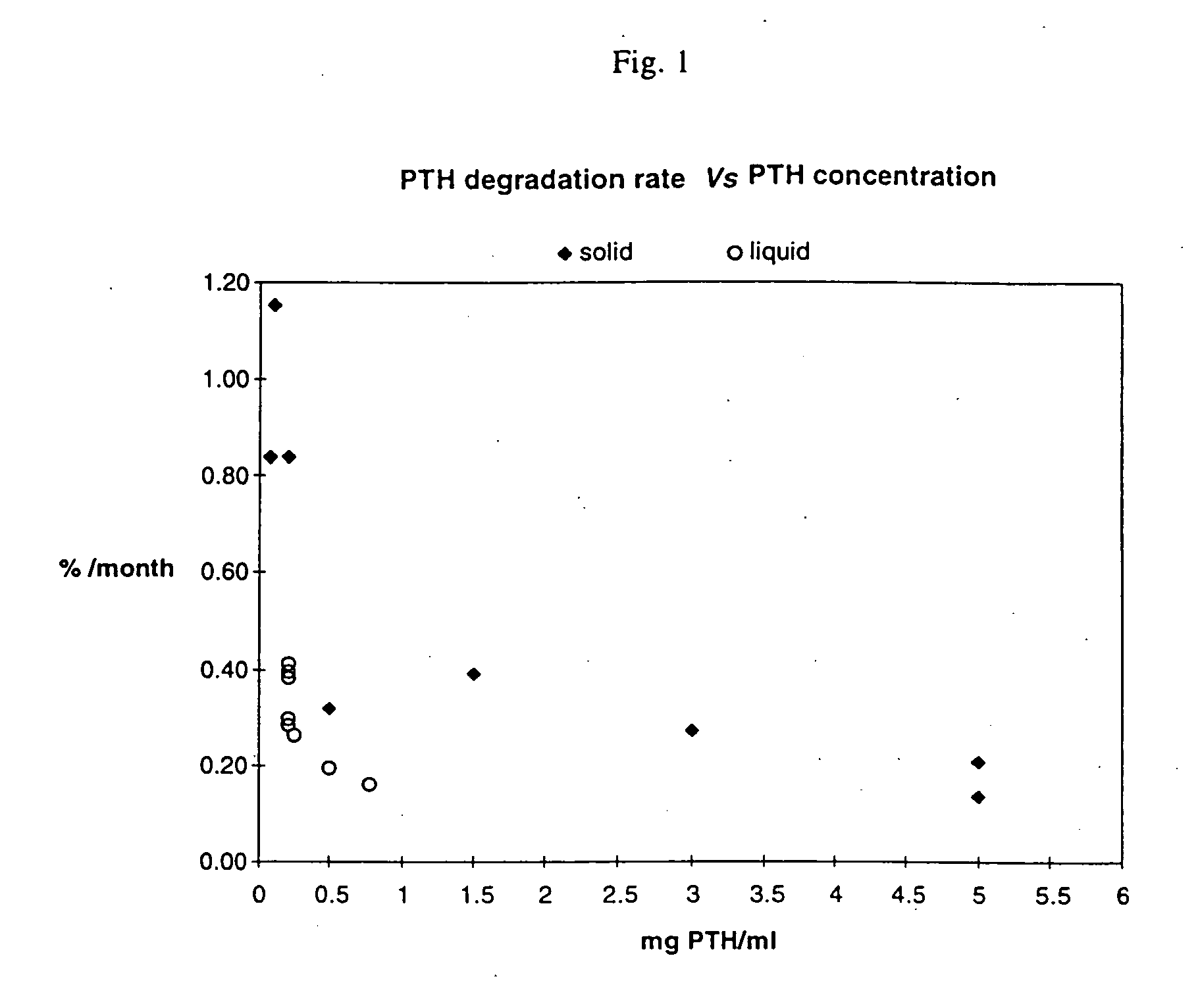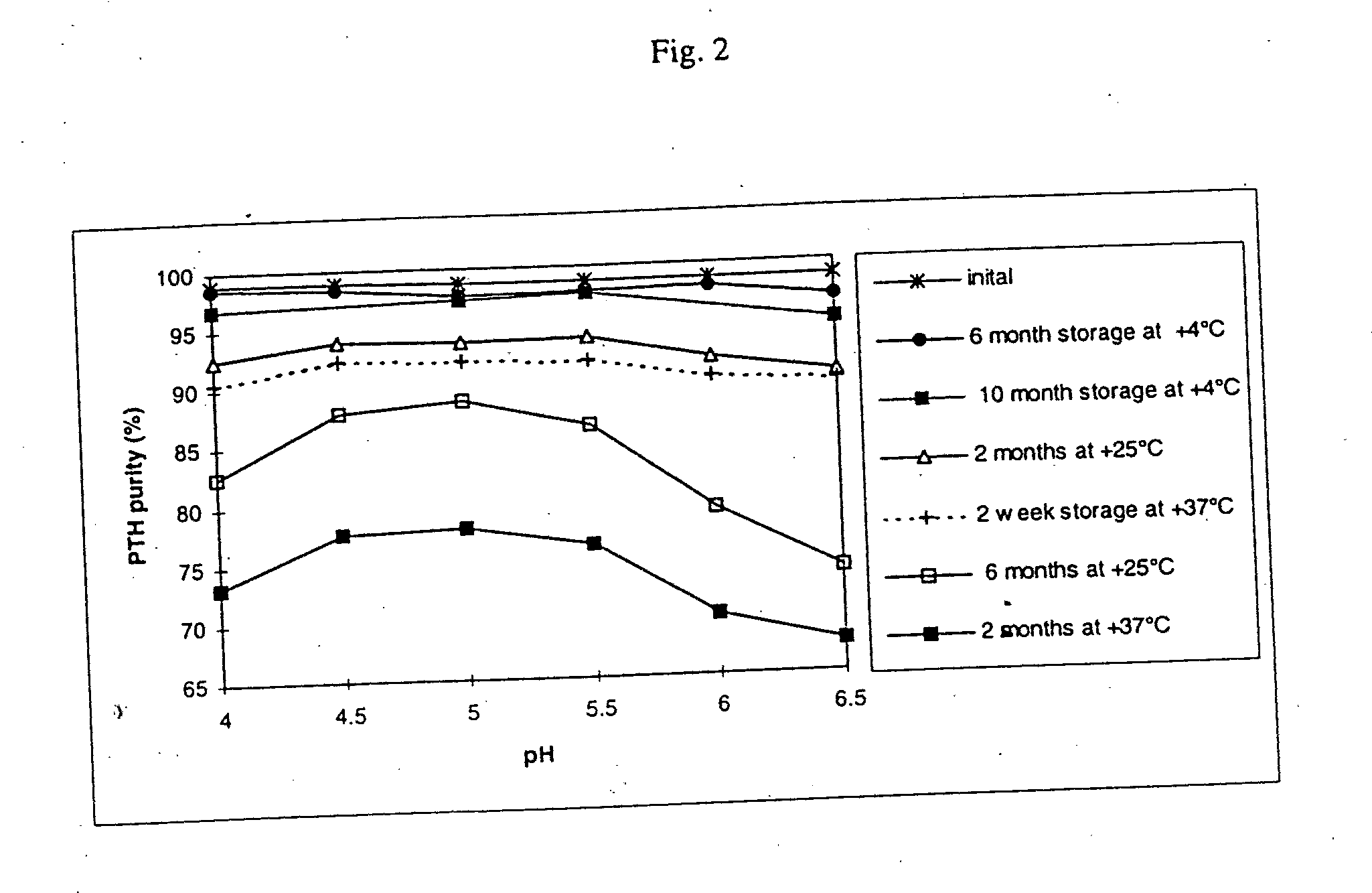Protein formulations
a technology of protein and parathyroid hormone, which is applied in the direction of parathyroid hormone, peptide/protein ingredients, inorganic non-active ingredients, etc., can solve the problems of increasing protein degradation, chemical degradation of protein, and high undesirable effects, and achieve the effect of improving pth stability and half-li
- Summary
- Abstract
- Description
- Claims
- Application Information
AI Technical Summary
Benefits of technology
Problems solved by technology
Method used
Image
Examples
example 1
Effect of Protein Concentration on PTH Stability
[0037] Different concentrations of PTH were formulated in 10 mM citrate buffer. In one series of experiments, aliquots of the different formulations were lyophilized and stored at +37° C. to +40° C. In another series, aliquots were stored as a liquid at +4° C. At various time points (at least three), the PTH purity were determined by rp-HPLC. Results were expressed as area-%. The data for each time series, representing different concentrations of PTH, were then normalized, by setting the PTH purity at time zero to 100%, to allow comparisons between the series. The rate of PTH loss, expressed as % per month, were calculated from the slope of the linear regression line of % PTH Vs. Time, using the formula b=n∑xy-(∑x)(∑y)n∑x2-(∑x)2,
where x corresponds to time (months) and y corresponds to % PTH purity remaining from start.
[0038] As shown in FIG. 1 and in Tables I and II, the stability of PTH is markedly increased, when the PTH conc...
example 2
[0039] Six different formulations were prepared consisting of PTH (0.2 mg / ml), sodium citrate / citric acid (10 mM) at pH 4, 4.5, 5, 5.5, 6 and 6.5, respectively, and mannitol (50 mg / ml). Aliquots (1 ml) were sealed in 2 ml glass vials under nitrogen and analyzed for purity of PTH by RP-HPLC.
[0040] The results are shown in Table III and in FIG. 2. Degradation was accelerated at higher temperatures, as expected for most reactions. A rough calculation of this temperature effect showed a Q10≈2 in the temperature interval from +4° C. to +25° C., and Q10≈3 for the temperature interval from +25° C. to +37° C., at all pH values tested. This range of Q10 values is consistent with other biochemical reactions, and justifies the use of the higher temperatures for accelerated degradation studies. The results indicate that the formulations at a pH from 4.5 to 5.5 have advantageous properties in terms of PTH stability. All formulations appeared as a clear colorless solution after stor...
example 3
Effect of Ionic Strength on PTH Stability
[0041] Formulations were prepared consisting of PTH (0.2 mg / ml), sodium citrate / citric acid (10 mM), pH 6, and mannitol (50 mg / ml). NaCl was added to the final concentrations indicated in FIG. 3. The formulations with added NaCl were hypertonic with respect to blood plasma, in addition to having an increased ionic strength. Aliquots (1 ml) were sealed in 2 ml glass vials under nitrogen and analyzed for purity of PTH by RP-HPLC.
[0042] The results, shown in FIG. 3, indicate that at higher temperatures, a small increase in stability was obtained with increased ionic strength. At +4° C., however, the formulations were not affected by increased ionic strength in terms of PTH stability. All formulations appeared as a clear colorless solution after storage.
PUM
| Property | Measurement | Unit |
|---|---|---|
| Concentration | aaaaa | aaaaa |
| Concentration | aaaaa | aaaaa |
| Concentration | aaaaa | aaaaa |
Abstract
Description
Claims
Application Information
 Login to View More
Login to View More - R&D
- Intellectual Property
- Life Sciences
- Materials
- Tech Scout
- Unparalleled Data Quality
- Higher Quality Content
- 60% Fewer Hallucinations
Browse by: Latest US Patents, China's latest patents, Technical Efficacy Thesaurus, Application Domain, Technology Topic, Popular Technical Reports.
© 2025 PatSnap. All rights reserved.Legal|Privacy policy|Modern Slavery Act Transparency Statement|Sitemap|About US| Contact US: help@patsnap.com



